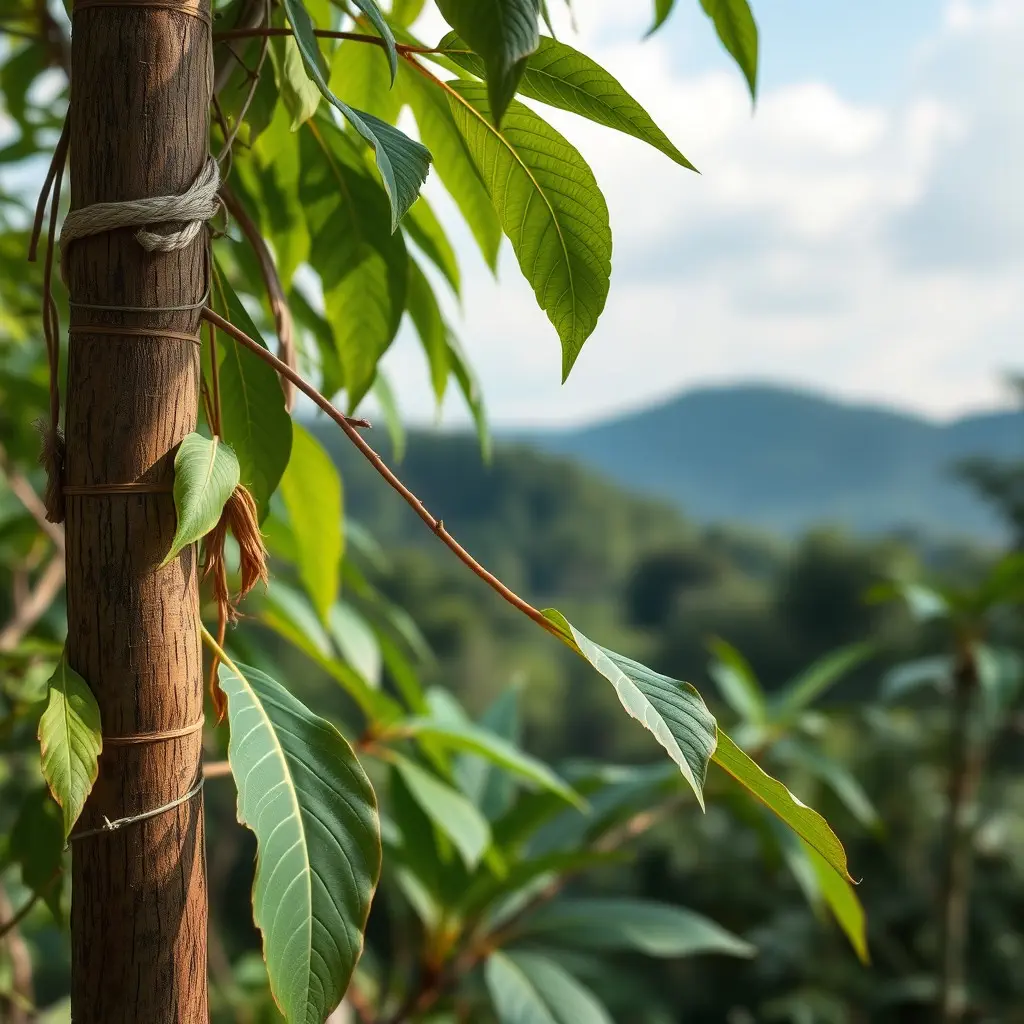Malaysian Kratom, derived from the Mitragyna speciosa tree, has garnered attention as a therapeutic aid for addiction treatment and recovery due to its unique alkaloids like mitragynine and 7-hydroxymitragynine. These compounds have shown potential in reducing opioid withdrawal symptoms by interacting with the brain's opioid receptors, which could help manage cravings and pain without the traditional side effects of opioids. Additionally, its anxiolytic and mood-enhancing properties may contribute to better mental health outcomes during recovery. Ongoing scientific research is exploring these therapeutic qualities further to validate their role in long-term addiction treatment support. However, the use of Malaysian Kratom is subject to varied regulations, necessitating careful consideration by healthcare providers and policymakers to ensure ethical sourcing, sustainability, and compliance with laws while assessing its potential benefits and risks for recovery from substance use disorders.
Exploring the therapeutic properties of Malaysian Kratom, this article delves into its potential as a treatment aid in overcoming addiction. With a focus on the scientific basis for its use in substance abuse rehabilitation and a critical examination of the regulatory framework surrounding it, we uncover the multifaceted role of this natural substance in recovery. Join us as we navigate the complexities of Malaysian Kratom’s application and implications in addiction treatment.
- Unraveling the Potential of Malaysian Kratom in Addiction Treatment and Recovery
- The Science Behind Malaysian Kratom's Role in Substance Abuse Rehabilitation
- Navigating the Regulatory Landscape and Ethical Considerations of Using Malaysian Kratom for Addiction
Unraveling the Potential of Malaysian Kratom in Addiction Treatment and Recovery

Malaysian Kratom, derived from the leaves of Mitragyna speciosa trees native to Southeast Asia, has garnered significant attention in the realm of addiction treatment and recovery. The unique alkaloid profile of this particular strain offers a multifaceted approach to managing withdrawal symptoms and addressing the psychological aspects of substance abuse. Preliminary studies suggest that the mitragynine and 7-hydroxymitragynine compounds found in Malaysian Kratom may help alleviate opioid withdrawal symptoms, providing a potential natural alternative for individuals seeking to recover from addiction. Its effects are believed to modulate the opioid receptors in the brain, which could be beneficial in mitigating cravings and pain without the high associated with traditional opioids. Moreover, the anxiolytic and mood-enhancing properties of Malaysian Kratom may contribute to an improved overall well-being, which is crucial during the recovery process. As research continues, the potential of this natural substance in addiction treatment is becoming increasingly recognized, offering hope for a holistic approach to overcoming addiction and supporting long-term recovery. The emphasis on natural and effective solutions has led to increased scrutiny and scientific investigation into the therapeutic properties of Malaysian Kratom, with ongoing studies aimed at elucidating its full potential in this capacity.
The Science Behind Malaysian Kratom's Role in Substance Abuse Rehabilitation

Malaysian Kratom, derived from the Mitragyna speciosa tree native to Southeast Asia, has garnered attention within the scientific and medical communities for its potential role in substance abuse rehabilitation. The leaves of this tree contain alkaloids such as mitragynine and 7-hydroxymitragynine, which have been studied for their effects on the brain’s opioid receptors. These compounds may help alleviate withdrawal symptoms and cravings in individuals recovering from addiction to substances like opioids. Clinical studies have shown that Malaysian Kratom can modulate dopamine and serotonin levels, neurotransmitters closely associated with mood regulation and reward processing. This modulation could be beneficial for patients undergoing detoxification and rehabilitation, as it may help mitigate the discomfort often experienced during the early stages of recovery.
Furthermore, the therapeutic potential of Malaysian Kratom extends beyond symptom management. Its effects on anxiety and depression, common co-occurring disorders in addiction, are also noteworthy. Preliminary research suggests that Kratom may offer an adaptogenic effect, helping the body manage stress and promoting a state of balance or homeostasis. This could be particularly advantageous for individuals undergoing the psychological and emotional challenges associated with recovery from substance abuse. However, it is crucial to approach the use of Malaysian Kratom with caution, as its efficacy and safety profiles are still under investigation, and its interaction with other substances can be unpredictable. Ongoing research aims to elucidate the mechanisms by which Malaysian Kratom may aid in addiction treatment and recovery, potentially offering a novel approach in the arsenal of tools available for clinicians treating substance use disorders.
Navigating the Regulatory Landscape and Ethical Considerations of Using Malaysian Kratom for Addiction

Navigating the regulatory landscape of using Malaysian Kratom (Mitragyna speciosa) for addiction treatment is a complex task due to its legal status varying across different jurisdictions. In some regions, Kratom is fully legal and has been explored as a natural alternative for opioid addiction treatment, while in others, it faces restrictions similar to controlled substances. The inconsistency in legislation underscores the need for careful consideration by healthcare providers and policymakers when integrating Kratom into recovery protocols. Ethical implications also arise from the potential for Kratom misuse and the necessity of establishing clear guidelines for its use, dosage, and access to ensure patient safety and efficacy in treatment outcomes. The ethical considerations extend to the responsible sourcing of Malaysian Kratom, as sustainability and quality control are paramount to prevent adulteration and maintain the integrity of the product for therapeutic purposes. It is crucial that any research or clinical application of Kratom respects both the legal framework and ethical standards to ensure its potential benefits for addiction recovery can be responsibly evaluated and utilized.
Malaysian Kratom’s emergence as a potential aid in addiction treatment and recovery offers promising insights into its therapeutic properties. The scientific community has begun to explore how this natural substance might help individuals navigate the challenges of substance abuse rehabilitation, with ongoing research warranting close attention from health professionals and policymakers alike. As the regulatory framework evolves to address the ethical considerations surrounding its use, it is crucial to continue monitoring the efficacy and safety of Malaysian Kratom within treatment protocols. The potential benefits for those struggling with addiction should be weighed against the current scientific evidence, ensuring informed decisions are made regarding its role in recovery. With careful consideration and proper oversight, Malaysian Kratom could play a significant part in the holistic approach to addiction treatment, providing hope and support on the path to wellness.






